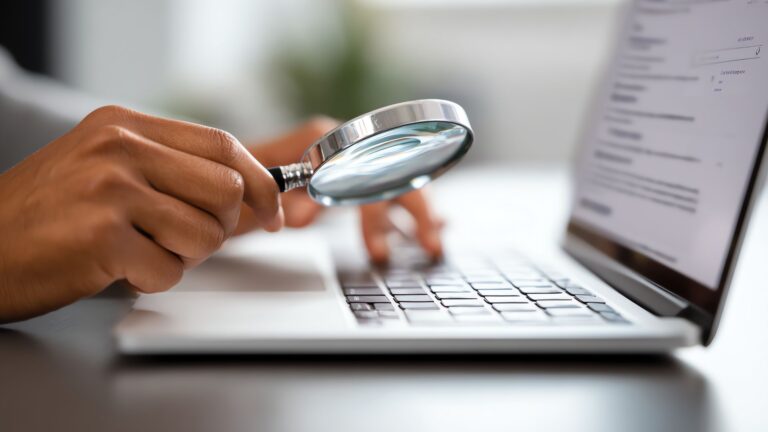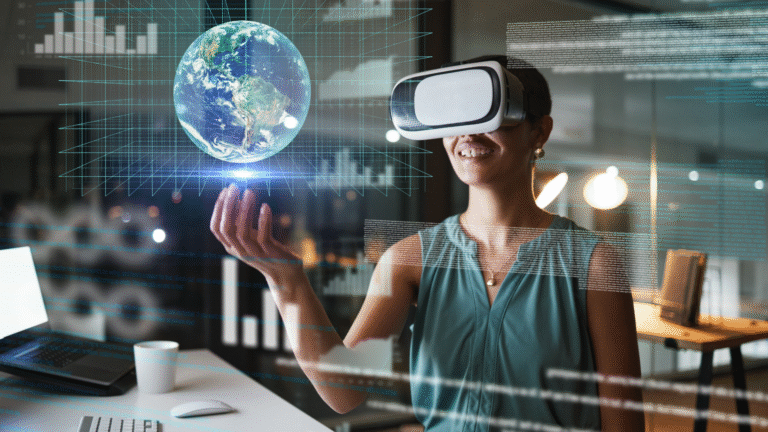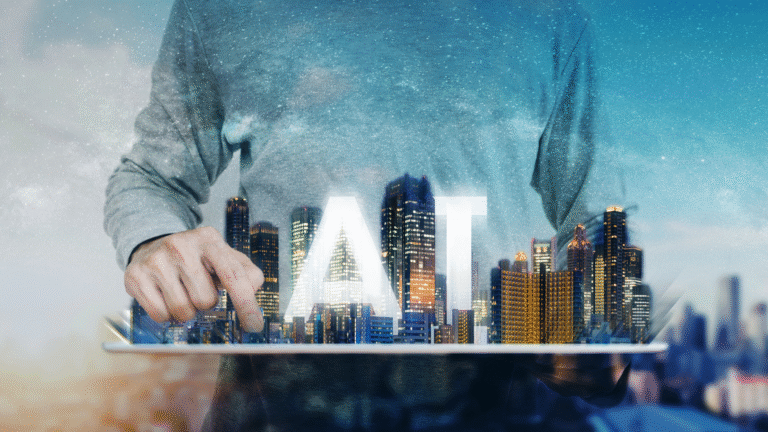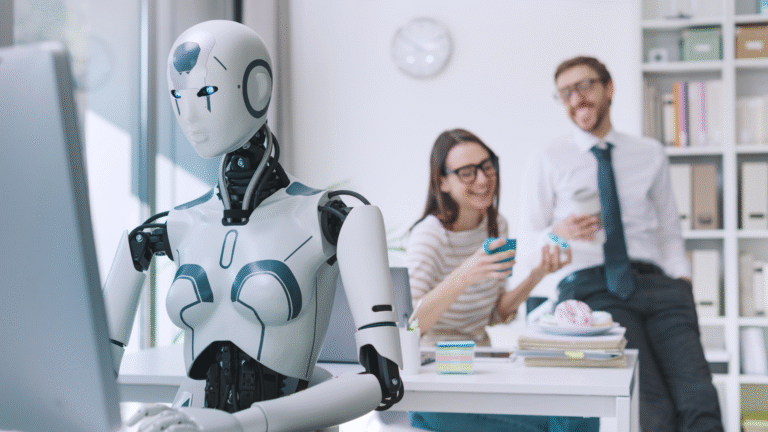Introduction
Think of a world where cameras don’t just watch but also think. Where they track, recognize, analyze, and even predict your behavior in real time. Sounds like a scene from a sci-fi movie, right? In reality, this world is already beginning to form around us. AI-powered surveillance is no longer a futuristic concept. It’s already being tested, adopted, and in some places, widely implemented.
But the real question is this: when will it become a global norm? The answer depends on how quickly the technology evolves, how governments and societies react, and what trade-offs we’re willing to accept in exchange for convenience or security.
What Exactly Is AI-Powered Surveillance?
AI-powered surveillance combines traditional monitoring tools like security cameras and sensors with artificial intelligence. Instead of simply recording and storing footage, these systems can:
- Recognize and track faces across multiple locations
- Identify objects like weapons or unattended bags
- Monitor crowd movement and density
- Detect “anomalies” or unusual behaviors
- Integrate with law enforcement or public databases
It’s not just about watching. It’s about interpreting what’s being watched and acting on that information automatically.
Why Is This Technology Growing So Quickly?
A few key drivers are fueling the rapid rise of AI surveillance:
- Smarter AI
Modern machine learning models, especially deep learning systems, have improved the accuracy and speed of facial and object recognition. Mistakes that once made the tech unreliable are now being reduced significantly. - Cheaper and Smaller Hardware
Cameras and sensors are more affordable and easier to install than ever. Edge computing allows devices to analyze data on the spot without needing massive servers. - Exploding Data Access
The more data AI has, the smarter it becomes. With the amount of visual and biometric data being generated every second, AI systems are constantly learning and improving. - Global Connectivity
High-speed internet and 5G allow real-time surveillance data to be transmitted and analyzed on the fly, making large-scale deployment possible.
Who’s Already Using AI Surveillance?
Adoption varies widely by region and purpose:
- China has integrated AI surveillance deeply into urban life, using it for facial recognition, behavior scoring systems, and public order.
- Dubai and Singapore are investing heavily in smart city infrastructure, which includes AI cameras in public transportation and traffic systems.
- The U.S. and U.K. are more cautious, deploying AI mostly in pilot programs for law enforcement or private-sector monitoring.
- Retailers and event venues in many countries use it to prevent theft, monitor foot traffic, or detect aggressive behavior.
So while it isn’t truly global yet, we’re seeing signs of it popping up just about everywhere.
When Will AI Surveillance Become “Normal” Globally?
Let’s break it down into stages:
Within the next 2 to 3 years
AI surveillance will become more common in major urban centers, airports, and large events. Private companies will lead this push, installing systems in malls, offices, and stores.
In 5 to 7 years
Expect broader adoption in medium-sized cities and developing countries. Costs will continue to drop, and prepackaged “plug-and-play” surveillance kits will make it easy for schools, hospitals, and even small businesses to join in.
In 10 to 15 years
It could be fully normalized. Most cities may have integrated AI surveillance into traffic systems, policing, and even public health. The systems won’t just watch. They’ll predict, analyze, and react in real time.
But will this look the same everywhere? Not likely. Regulations, public opinion, and political values will shape how far and how fast different countries adopt it.
What Are the Major Drawbacks and Risks?
This isn’t just about technology. It’s about people, rights, and the kind of world we want to live in. Let’s explore the challenges.
Privacy at Risk
AI surveillance often happens without consent. When you walk down a public street, there’s a good chance you’re being recorded, and possibly analyzed, without knowing it. That creates a society where being watched becomes normal, and that’s deeply concerning to many.
Bias and Inaccuracy
Facial recognition systems have struggled with accuracy, especially for people of color, women, and children. These biases can lead to wrongful detentions, false accusations, and broken trust in the system.
Freedom of Expression
If people feel they’re always being watched, they may hesitate to protest, gather publicly, or even speak freely in certain spaces. This could have a chilling effect on democracy and civic engagement.
Lack of Global Standards
Some countries have strict privacy laws. Others have none at all. This creates a patchwork of legal protections that can be easily exploited. Without international standards, surveillance can be misused or abused without consequence.
Security Vulnerabilities
Ironically, these systems can also be hacked. Imagine if a bad actor gained access to a nationwide surveillance feed or facial recognition database. The damage could be catastrophic.
How Should We Prepare for What’s Coming?
Governments need to put strong policies in place before deployment, not after. Transparency, public audits, and independent oversight are essential.
Businesses using AI surveillance should clearly communicate their policies, collect only what’s necessary, and keep their systems secure.
Citizens should stay informed and demand accountability. Whether through voting, activism, or legal challenges, public voices matter.
So, When Does It Really Become a Norm?
A technology becomes normal when it fades into the background. When it’s part of the infrastructure. When people stop questioning it.
For AI surveillance, that moment will come when it is:
- Embedded in everyday objects like streetlights and kiosks
- Backed by legislation rather than just private contracts
- Framed as a “must-have” for safety and efficiency
- Largely accepted by the public, even if grudgingly
We’re not quite there yet. But we’re getting closer every year.
Frequently Asked Questions (FAQ)
1. Can AI surveillance stop crimes before they happen?
It can help detect unusual behavior patterns, but it’s not foolproof. It should always support human decision-making, not replace it.
2. Is AI surveillance legal everywhere?
No. Some countries have strict rules limiting or banning it. Others have almost no regulations. Always check local laws.
3. How does AI surveillance affect privacy?
It often reduces it. Many systems operate in public spaces without user consent, raising concerns about constant tracking and data storage.
4. Are AI surveillance systems biased?
Yes, they can be. Facial recognition tools have shown racial and gender biases, especially when not properly trained on diverse datasets.
5. What can individuals do to protect their privacy?
Stay informed, support ethical tech policies, and use privacy-enhancing tools where possible. Advocating for transparent policies is also important.
Final Thoughts
AI-powered surveillance is moving forward whether we’re ready or not. It has clear benefits—public safety, crime prevention, and operational efficiency. But without careful regulation and public debate, the risks are just as real.
So, when will it become a global norm? Probably sooner than we think. The better question might be: What kind of surveillance society are we willing to accept?








